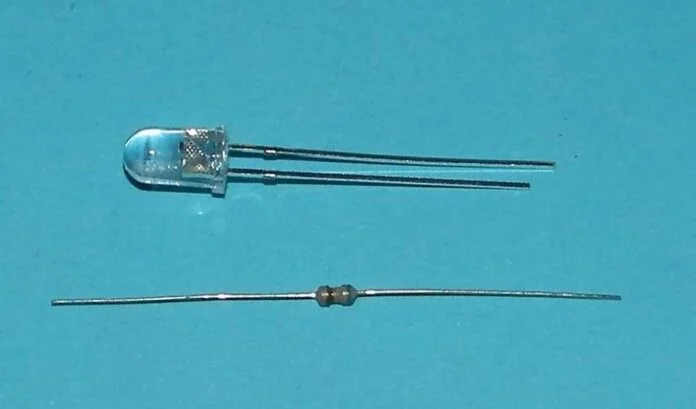Crafting Miniature Masterpieces: The Fascinating World of Knipper Modelbouw

Introduction
Ever thought about how much detail can fit into a tiny model? Enter the world of Knipper Modelbouw, where small isn’t just small—it’s art. Whether you’re a seasoned builder or someone dipping their toes into the hobby for the first time, modelbouw (model building) is where patience, creativity, and precision come together in an incredibly satisfying way.
In this article, we’ll unravel the secrets behind Knipper Modelbouw, diving into its roots, the tools of the trade, and the techniques that make these miniatures so captivating. Oh, and if you’re wondering if you should get into it? Spoiler alert: you totally should! Let’s get building, shall we?
What is Knipper Modelbouw?
If you’re unfamiliar with the term, “modelbouw” literally translates to “model building” in Dutch, and “Knipper” refers to a specific brand or style of model making that focuses on paper models. While plastic and wood models are more commonly known, Knipper Modelbouw stands out because of its dedication to crafting stunning paper-based models with precision and elegance. The final results are no less impressive than their plastic counterparts—in fact, they often display an extra level of charm.
A Brief History
Before the digital era, hands-on hobbies like modelbouw played a major role in leisure activities. While model-building started centuries ago as a method for designing structures and ships, it evolved into a popular hobby during the 19th and 20th centuries. The Dutch, among others, developed a particular passion for it. That’s where Knipper Modelbouw carved its niche.
Knipper, a name synonymous with paper model kits, became known for its incredibly detailed historical models, especially architecture and vehicles. And here’s the thing: with paper model kits, the sky’s the limit! Anything from ancient castles to retro airplanes can be brought to life in miniature form. The precise cuts and folds needed for paper models make them a joy for hobbyists who love detail and craftsmanship.
Tools You Need to Dive into Knipper Modelbouw
So, what do you need to start your journey with Knipper Modelbouw? Unlike other types of model building that might require specialized tools like airbrushes or miniature saws, Knipper models mainly rely on basic tools. But don’t let that fool you—getting the perfect result takes skill, patience, and a steady hand!
Essential Tools for Knipper Modelbouw
Here’s a breakdown of the must-haves if you want to try your hand at Knipper Modelbouw:
- Sharp Hobby Knife: Precision is key! A sharp hobby knife helps you make the cleanest cuts for your paper pieces.
- Cutting Mat: Protect your workspace and ensure that your cuts are clean and accurate by working on a good-quality cutting mat.
- Steel Ruler: Straight edges are essential in paper model building. A sturdy steel ruler will keep your lines sharp and neat.
- Glue: Not all glues are created equal. In Knipper Modelbouw, you’ll need a good quality white glue that dries clear but fast.
- Tweezers: For those tiny, hard-to-handle pieces, tweezers are your best friend!
- Bone Folder or Scoring Tool: Crisp folds are crucial for paper models. Scoring the paper before folding will give you cleaner results.
Nice-to-Have Extras
- Magnifying Glass: Especially for the smaller kits, this will help you see every minute detail.
- Craft Paints: Some hobbyists add a touch of color to their models to enhance details.
- Clamps or Weights: These come in handy when you need to hold pieces in place while the glue dries.
Step-by-Step: How to Build Your First Knipper Model
Ready to jump into your first project? Here’s a beginner-friendly guide on how to start your first Knipper Modelbouw.
1. Choose Your Model
Start small! If you’re a beginner, avoid complex structures like cathedrals or ships with intricate rigging. Instead, try something simple like a car or a small house. Knipper offers various kits, ranging from easy to expert, so there’s something for everyone.
2. Prepare Your Workspace
Make sure your workspace is well-lit and clutter-free. Trust me, it’s much easier to work on your model without having to dig through scattered tools and paper scraps!
3. Study the Instructions
Before cutting a single piece, carefully read through the instructions. This step is often overlooked but can save you from headaches later. You’ll want to understand the order in which pieces should be assembled, so nothing gets accidentally glued out of place.
4. Start Cutting and Folding
Using your hobby knife and steel ruler, begin cutting the pieces out of the paper sheets. Take your time—precision matters here! Once cut, carefully score any lines that need to be folded, and make sharp, clean folds.
5. Glue the Pieces
Apply glue sparingly! You don’t want globs of glue oozing out of the joints. Less is often more in model building. Hold pieces together for a few moments to ensure they bond properly before moving on.
6. Assemble Section by Section
Many models are built in sections that you later piece together. Focus on completing one section at a time before connecting everything. For instance, if you’re working on a car, assemble the chassis first, then move to the interior, and finally work on the body.
7. Enjoy the Result!
Once all pieces are glued, assembled, and dried, step back and admire your handiwork. Don’t worry if it’s not perfect—each model you build teaches you something new.
Why Choose Knipper Modelbouw?
With so many types of model-building kits available, you might wonder, “Why opt for Knipper Modelbouw?” Here are a few reasons why paper models stand out:
1. Portability
You can take paper model kits anywhere. Unlike large plastic kits that might require bulky tools and paints, Knipper model kits only need the basics. You could easily pack them for a vacation or build them at a cafe.
2. Eco-Friendly
Paper models are environmentally friendly! No plastic waste here. Plus, once completed, they’re lightweight and easy to store.
3. Affordable
Most Knipper model kits are relatively inexpensive compared to their plastic counterparts. This makes them accessible to a wider range of hobbyists, from beginners to experts.
FAQs About Knipper Modelbouw
1. Are Knipper Modelbouw kits difficult to build?
The difficulty level varies, but Knipper offers kits for all skill levels. Beginners can start with simpler models, while more experienced builders can opt for intricate structures like castles or aircraft.
2. Do I need specialized tools for Knipper Modelbouw?
Nope! Basic tools like a sharp hobby knife, ruler, and glue are usually all you need. However, some extra tools like tweezers or a magnifying glass can make the process easier.
3. How long does it take to finish a model?
This depends on the complexity of the kit. Simple models can be completed in a few hours, while more advanced projects may take several days or even weeks.
4. Can I paint or customize my model?
Yes, some builders enjoy adding paint or extra details to their models to make them stand out even more. However, this is entirely optional.
Conclusion
Knipper Modelbouw is more than just a hobby—it’s a way to combine art, history, and craftsmanship into something truly unique. Whether you’re recreating a historical landmark or assembling a miniature version of your favorite vehicle, the satisfaction of building a detailed model from paper is unparalleled.



